
To ensure the purity of Zamzam water, a set of procedures is undertaken, including: Pumping it in a closed circuit through rust-resistant pipes. Passing it through specialized filters to trap sand and impurities. Transferring it to chemically treated tanks to prevent bacterial activities. Conducting a series of chemical and bacteriological analyses before using the water. Requiring health certificates for all Zamzam water service employees to ensure they are disease-free. Cleaning the bases of ...
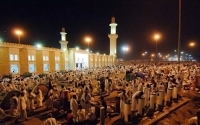
The area of Muzdalifah Holy Site is estimated at 9.6 km², of which pilgrims use 6.8 km² during their overnight stay. It is the third station for pilgrims among the holy sites in Makkah al-Mukarramah , where they spend the night of the tenth of Dhu al-Hijjah after arriving from the holy site of Arafat . It contains al-Mash'ar al-Haram Mosque , which is seven km away from Namirah Mosque in Arafat and five km from al-Khayf Mosque in Mina . The area of Muzdalifah is divided into sleeping are...
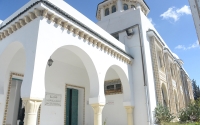
King Abdulaziz Mosque in Tunisia is one of the projects undertaken by the Kingdom of Saudi Arabia , located in al-Manar area of Tunis City, the capital of the Republic of Tunisia. It was built during the reign of King Fahd Bin Abdulaziz Al Saud and later renovated and restored by the Saudi Fund for Development at a cost of SAR2 million. Establishment of King Abdulaziz Mosque in Tunisia The idea of establishing the mosque originated with Dr. Abdullah al-Wasif, the former president of the Supreme...
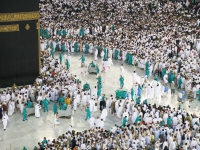
The Grand Mosque is cleaned using specially manufactured disinfectants designed for use within its halls. It is washed ten times daily, with the cleaning handled by more than four thousand workers. Each day, over 150,000 l of disinfectants are used. Staff circulate throughout the prayer halls and corridors with incense burners emitting the fragrant scent of oud for perfuming the Grand Mosque. Al-Kaaba and its elements are anointed with oud oil before every prayer. Additionally, prayer rugs are ...
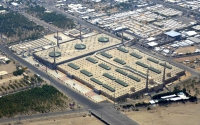
The largest mosque in the sacred sites of Makkah al-Mukarramah is Nimrah Mosque , located in Arafat site. It was built in the mid-eighth century on the site where Prophet Muhammad, peace be upon him (PBUH), delivered the Farewell Sermon during the Farewell Pilgrimage. It is the second-largest mosque in Makkah al-Mukarramah Province by area, after the Grand Mosque . On the Day of Arafah, it accommodates approximately four hundred thousand worshippers from among the Hajj pilgrims. Over time, Nimr...
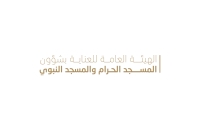
The Grand Mosque Mediation and Moderation Academy was established by the General Presidency for the Affairs of the Two Holy Mosques (currently the General Authority for the Care of the Affairs of the Grand Mosque and the Prophet’s Mosque) on January 27, 2021. The Grand Mosque Mediation and Moderation Academy strives to achieve many goals, including: Fostering correct thinking among members of the Islamic nation, promoting upright behavior based on the Holy Quran and the Sunnah of the Prophet,...
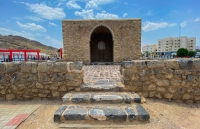
The historical endowments in al-Madinah al-Munawwarah are endowments established in al-Madinah al-Munawwarah by the Prophet Muhammad, Peace Be Upon Him (PBUH), his family, his wives, his Companions, the followers, and their followers, up to the present time, over more than 1,400 years. They include mosques, schools, Arbitah , libraries, Asbilah , wells, and public service and development facilities, among others. The evolution of endowments in al-Madinah al-Munawwarah The Companions, may Allah ...
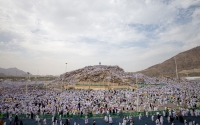
Hajj Initiatives in the Kingdom of Saudi Arabia are a package of programs aimed at providing the opportunity for the largest number of Muslims to perform Hajj rituals in an easy and regulated journey. Hajj initiatives operate on specific strategies according to a methodology that enhances Hajj services and economics, aiming to develop and grow the holy sites to meet the aspirations of pilgrims coming to perform it every year and to host the largest possible number of pilgrims. This is achieved ...

The Sustainability and Empowerment Program is a developmental program focused on developing the non-profit sector, supporting endowments' contributions to economic and social development, and enabling them to achieve the goals of Saudi Vision 2030 . It was launched by the General Authority for Awqaf in partnership with the Ministry of Human Resources and Social Development on October 13, 2019. Importance of the Sustainability and Empowerment Program The Sustainability and Empowerment Progr...
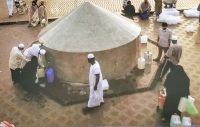
The Zamzam Well originated when Prophet Ibrahim, peace be upon him (PBUH), came to Makkah al-Mukarramah and left his wife Hajar and his son Ismail in a valley with no vegetation or water. When Hajar's water supply ran out, her child began to writhe from thirst. She hurried between Safa and Marwah, searching for help, until she heard a sound at the site of the well. It was Jibril (PBUH) who caused the spring to gush forth, and the mother of Ismail contained the water and scooped from it. Th...

The idea of creating courtyards for the Grand Mosque began during the first Saudi expansion in 1955. This expansion included the construction of new architecture for the mosque, the provision of support for its structures, and the addition of open courtyards that increased its area and provided more options for visitors and pilgrims coming to the Grand Mosque. The number of courtyards in the first and second Saudi expansions reached seven, with a total area of all the courtyards around the Gran...
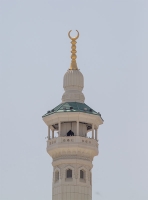
The number of minarets at the Grand Mosque is nineteen, each with a height of eighty-nine m. There were five minarets before the Saudi era, and the number increased to seven during the first Saudi expansion. The building of the second Saudi expansion included two new minarets, each with a height of eighty-nine m, designed architecturally to resemble the previous seven minarets. The number of minarets reached thirteen in the third Saudi expansion , and currently, construction and architectur...